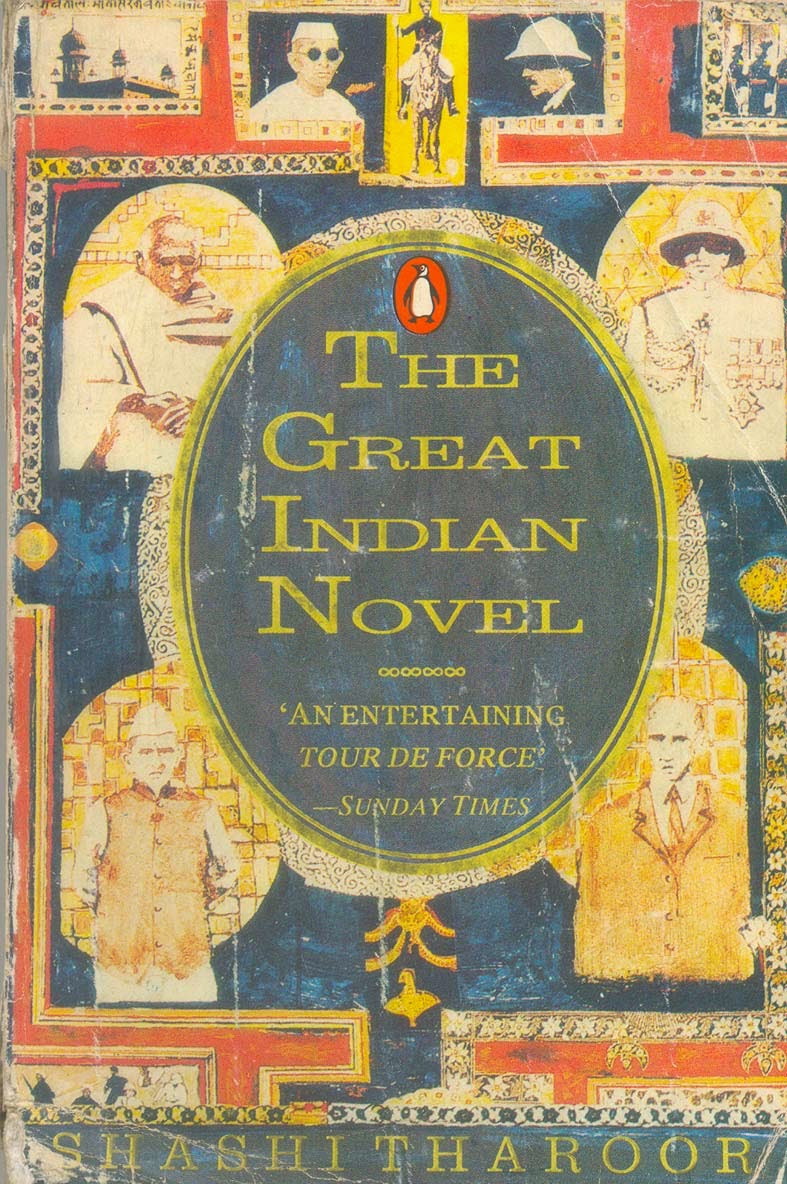52W52B - Book 6 The Great Indian Novel
I feel a book is great if it inspires and urges you to read more on the same topic due to the sheer grip it has on the mind while you read it. For me, “The Great Indian Novel” did exactly that. It motivated me to read not only about Mahabharata but also about Indian struggle for Independence.
Shashi Tharoor did a wonderful job of mixing two of the most important epics from Indian history/mythology – Mahabharata and Indian Struggle for Independence. In the book, there is a close resemblance between different characters from Mahabharata and those from Indian freedom movement. Resemblance is so close that often you end up pronouncing the actual names rather than the ones given in the book! For instance, I often pronounced “Gangaji”, who is Bhishma from Mahabharata – as “Gandhiji”. Tharoor has made absolutely no efforts at hiding the identity of the characters. For example, Gangaji is Gandhiji (pretty obvious), Dhritarashtra is Nehru, Vidura is Vallabhai Patel, Pandu is Subash Chandra Bose, Mohammed Ali Karna is a vague impression of Mohammed Ali Jinnah, Priya Duryodhani (Duryodhan) is Indira Priyadarshini Gandhi and so on.
The novel has 18 "books," just as the Mahabharata has 18 books and the Battle of Kurukshetra lasted for 18 days. Like I mentioned earlier, there is close resemblance between the incidences that happened during India’s freedom movement and the incidences described in the book through characters from Mahabharata. Incidences like Chauri-chaura, Quit India, Champaran campaign, Jallianwala Bagh tragedy, Dandi March, resignation of Subhash Chandra Bose and his attempt to attack India, which ended in failure, Nehru’s affair with Mrs. Mountbatten and so on so forth have been described.
Tharoor has used his subtle, and sometimes not-so-subtle satires to describe whole of Indian society during its colonial and post-colonial days. It might seem that he has been unduly harsh on almost everyone.
He was exceedingly harsh on Indira Gandhi, errr… Priya Duryodhani. She has been depicted as a villain.
Even at the age of twelve, overkill was already her problem.
The events around emergency and the complete dictatorial position that Indira Gandhi had taken during her reign as PM have been described pretty well. Strangely Rajiv Gandhi and Sanjay Gandhi are nowhere to be seen: for Priya Duryodhani never married and never had children.
Good portion of the book revolved around Gangaji, and every now and then the Ved Vyas, the one who was telling the tale, kept reiterating that whenever Gangaji came, he took away all the lime light from everyone.
Tharoor often indulged in irreverent tone even towards Gandhiji, which is unheard, or in this case, unread of.
Gangaji(Gandhiji), the man in charge of Hastinapur for all practical purposes, thin as a papaya plant, already balder than I, Ved Vyas, peering at you through round-rimmed glasses that gave him the look of a startled owl.
However, during the middle part, he described how Gangaji created frustrating situations for the Britishers, and the tone sounded more respectful.
As for me, the book was a page-turner and unputdownable. It was engrossing, slightly enlightening, funny and like I mentioned right at the beginning – motivating too – motivating to read more about both, Mahabharata and Indian Struggle for Independence. Tharoor also included, and acknowledged, where he gained his knowledge about Mahabharata from – C Rajgopalachary’s Mahabharata and P Lal’s books on Mahabharata. So you don’t have to struggle to find books on Mahabharata at least.
The only issue I had was that I couldn’t relate who Pandavas resembled. Such strong characters from Mahabharata, were given absolutely no importance here, except Yudhishthira.
I strongly recommend the book especially to all Indians, for they would be able to relate the incidences from the history in a better way.


Comments